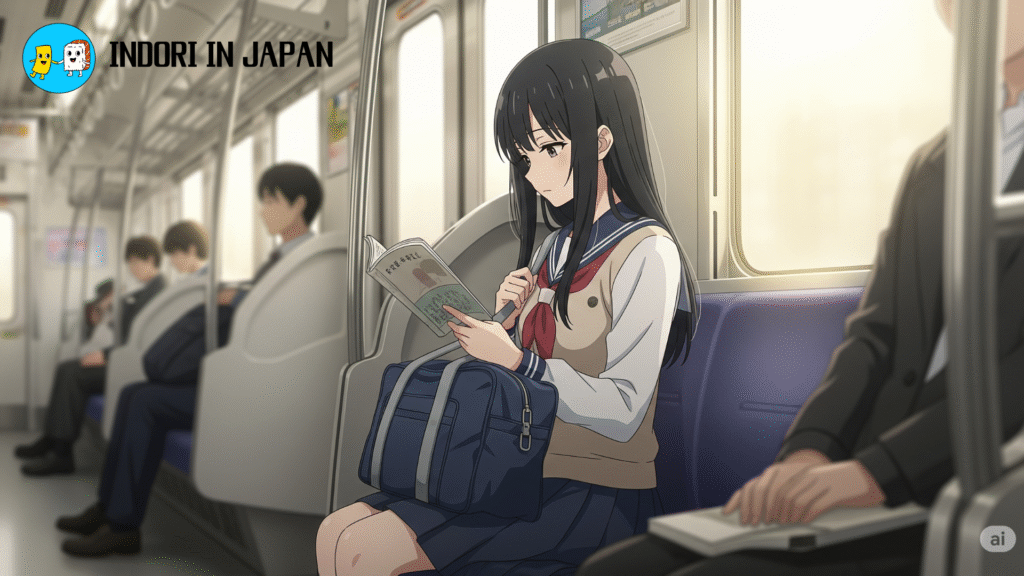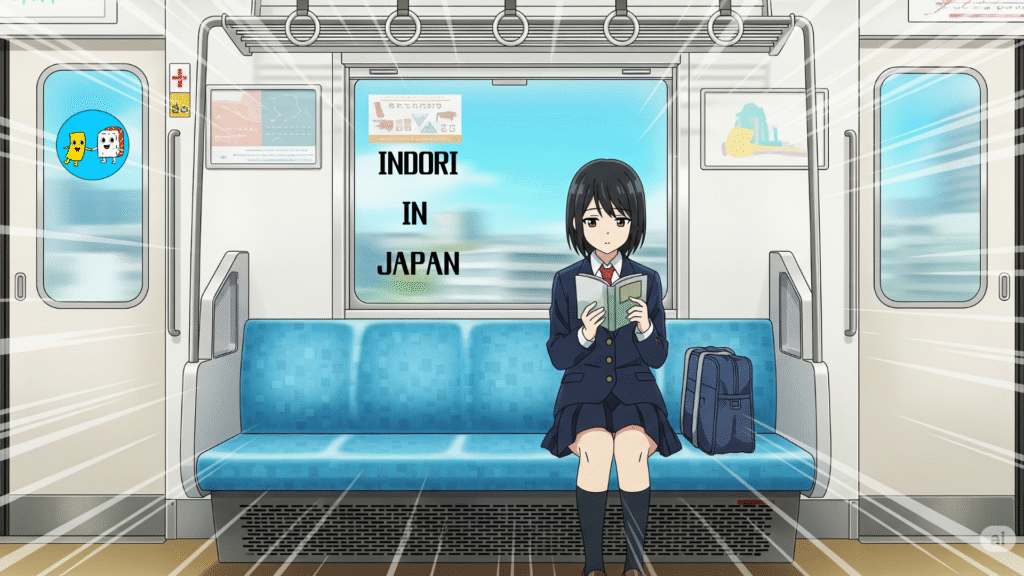A Gaijin's Guide to Japanese Train Etiquette: The Unwritten Railway Rules
皆さん、こんにちは!(Hello everyone!)
Namaste, and welcome to Japan. For a person from Indore, a city of vibrant chaos and spontaneous charm, the journey to Japan is a trip not just across continents but into a world where everything runs with a precision that can feel almost alien. The railway system here is a perfect example of this. It’s an intricate, perfectly choreographed dance, and while the trains are punctual and efficient, the real guide to surviving and thriving is understanding the unwritten railway rules and the platform.
This is not a dry list of facts. This is a guide from one gaijin to another, a fellow traveller who has navigated the initial confusion and learned to appreciate the quiet genius behind the system. The goal here is to help a person not just follow the rules but understand the cultural logic behind them, so that a person can move from feeling like a tourist to feeling like a local.
Navigating the System – The Practical Gaijin's Handbook
System Overview (unwritten railway rules)
Japan’s rail network is a marvel of modern engineering, known worldwide for its impeccable punctuality, safety, and diversity. At its core are two main players: the Japan Railways (JR) Group, which operates the world-famous Shinkansen, or Bullet Train, connecting major cities at lightning speed, and the extensive subway systems that are the lifeline for navigating major metropolises like Tokyo and Osaka. Beyond these, various private and local railways fill in the gaps, offering everything from express services to luxurious sightseeing trains. The entire system functions with a reliability that makes it the backbone of both daily life and long-distance travel.
Tickets and Technology
For a gaijin, the first step into this system can be a bit intimidating, but technology offers a simple solution. The easiest way to get around is with a prepaid IC card like Suica or Icoca. These cards are a lifeline that simplifies the process of using trains immensely. Instead of fumbling with cash or trying to find your destination on a fare map, a person simply has to tap the card on the reader at the ticket gate to enter and again to exit. The system automatically calculates the correct fare, and a person’s balance is displayed with each tap.
For those without an IC card, the traditional method involves using a ticket machine. The process requires a person to find their destination and its corresponding fare on a map above the vending machine. Most machines accept a variety of coins and bills, and once the money is inserted and the fare button is pressed, the ticket is dispensed along with any change.
A crucial tip for a newcomer is the fare adjustment machine. If a person buys a ticket for the wrong amount, whether by mistake or because the destination name on the map is only in Japanese, this machine is a lifesaver. Upon arriving at the destination station, a person can simply insert the incorrect ticket into the fare adjustment machine, which will calculate the difference and prompt them to pay the remaining amount. This is a subtle yet powerful example of the cultural value placed on efficiency and public harmony. The system avoids creating a problem that requires human intervention, allowing the flow of people to continue unimpeded.
After acquiring a ticket or IC card, a person can proceed through the ticket gates. For tickets, a person inserts it into a slot, walks through the gate, and collects the ticket from the other side. With an IC card, a person simply touches the card to the reader for about a second. For Shinkansen platforms, a person will need to pass through a second, separate set of ticket gates that are clearly marked.
A Simple Breakdown of Ticket and IC Card Use
| Ticket Machine | IC Card |
|---|---|
| Best for one-off trips. | Best for daily travel. |
| Requires a person to find their destination and fare on a map. | No need to calculate fare, just tap in and out. |
| It can be a hassle if a person buys the wrong fare, requiring a visit to a fare adjustment machine. | Fare is automatically calculated, eliminating mistakes. |
The Unwritten Code of the Train Car
The Sacred Dance of Boarding
For an Indori, used to the vibrant rush of a crowded railway station, the Japanese way of boarding a train can seem almost counterintuitive at first. The most important rule to learn is a universal sign of respect: a person must wait on either side of the door and allow others to exit the train before entering. There is no rushing to snag a seat; the entire system is designed for a smooth, unimpeded flow of people. Sometimes, if the car is particularly crowded, a person may need to briefly step off the train to allow other passengers to exit or board, and then re-enter. This is a selfless act that improves the experience for everyone and is a quintessential example of Japanese public courtesy.
The Art of Silence
One of the most unique aspects of riding the train in Japan is the quiet atmosphere. Most people remain silent, reading, looking at their phones, or listening to headphones. While low-volume conversations with companions are permitted, loud conversations are considered rude. The most critical rule to remember as a gaijin is that carrying on a phone conversation is seen as very rude, even if it is not strictly forbidden. If a person receives an important call, it is acceptable to answer briefly and explain that they will return the call later. This silence is a form of collective consideration, a shared respect for the personal space and peace of mind of everyone else in a confined space. It directly reflects a core cultural value of politeness and humility.
Onboard Dining: A Tale of Two Trains
The rules for eating on trains are not universal and depend entirely on the type of train. On local, urban trains and subways, it is generally considered rude to eat. The reasons for this are practical: the risk of spilling food and the nuisance of strong smells in a crowded car. However, on long-distance trains like the Shinkansen, eating is a popular pastime. Many people buy a delicious ekiben (a packed meal) from a station kiosk to enjoy while they travel. Even on the Shinkansen, a person should still be considerate and avoid anything too smelly to not disturb other passengers.
Managing Your Space
Being mindful of one’s personal space is critical. When riding a crowded train, especially when standing, it is good manners to put a backpack in front of you so that it does not bump the people behind you. When seated, a person should use only one seat and refrain from spreading their legs. Luggage should be kept on overhead racks or held close, ensuring that it does not block the aisles or doorways. For those with large luggage, it is recommended to avoid busy train times if possible. This meticulous management of personal space is a reflection of a broader concept of collective responsibility, where an individual’s actions are understood to have ripple effects on the well-being of the group.
The Gaijin's Quick-Reference Etiquette Guide
| Do (The Japanese Way) | Don't (Avoid This) |
|---|---|
| Wait for passengers to alight before boarding. | Rush to get a seat. |
| Place your backpack in front of you. | Keep your backpack on your back in a crowded car. |
| Keep your phone on silent and do not make calls. | Talk loudly on the phone or hold a loud conversation. |
| Give up your priority seat to those in need. | Pretend not to see someone who needs a seat. |
| Eat a delicious ekiben on the Shinkansen. | Eat a full meal on a local train. |
Special Considerations and Deeper Cultural Understanding
Priority Seating
Japanese trains have clearly marked priority seats, known as yusen-seki, with distinct colours and signs on the windows. These seats are designated for the elderly, people with disabilities, pregnant women, and parents with young children. While other passengers can sit in these seats if no one else needs them, the key etiquette is to be ready to give up a seat immediately when someone who needs it boards the train. This simple act of observation and thoughtfulness is a true test of one’s consideration for others.

Women-Only Cars
To ensure the safety and comfort of female passengers, many train lines have women-only cars, which are reserved during rush hour. Outside of these specific, busy times, the cars are open to all passengers. These cars are clearly marked on the train and on the platform.
Gaijin's Survival Phrases: A Quick Guide
Now, bhai, you know the rules, but what about the language? Don’t worry, you don’t need to be a linguist. A few key phrases will make all the difference. Just remember to say Sumimasen before you ask for help—it’s like saying “excuse me” or “I’m sorry,” and it shows you’re being respectful.
Essential Words
Let’s start with the basics. These are the words you’ll see everywhere on signs and maps:
- Densha (Train): 電車
- Eki (Station): 駅
- Iriguchi (Entrance): 入口
- Deguchi (Exit): 出口
- Kippu (Ticket): 切符
- Ho-mu (Platform): ホーム
- Sen (Line): 線
Asking for Directions
If you’re looking for a place, these are your go-to phrases:
- “Sumimasen, [place name] wa doko desu ka?” (Excuse me, where is [place name]?)
- すみません、[place name]はどこですか?
- “Eki wa doko desu ka?” (Where is the station?)
- 駅はどこですか?
- “Kono densha wa [station name] ni tomarimasu ka?” (Does this train stop at [station name]?)
- この電車は[station name]に停まりますか?
Tickets and Travel
When at the counter, or just figuring out the fare:
- “Kippu o kudasai.” (One ticket, please.)
- 切符をください。
- “[station name] made ikura desu ka?” (How much is it to [station name]?)
- [station name]までいくらですか?
- “Kippu wa doko de kaimasu ka?” (Where can I buy a ticket?)
- 切符はどこで買いますか?
Directional Terms
You’ll often hear these terms in announcements or see them on signs:
- ~yuki (Bound for ~): ~行き
- ~houmen (For ~ direction): ~方面
- Migi (Right): 右
- Hidari (Left): 左
By using these, you’re not just a tourist but a gaijin who is making a sincere effort. And that, my friend, is the most important rule of all.
Final Tips for a Smooth Ride
A small gesture goes a long way. When reclining a seat on a Shinkansen or limited express train, it is a kind gesture to say “excuse me” to the person behind you. Similarly, the station staff is available to help people with wheelchairs or physical disabilities get on and off the trains. A person should not hesitate to ask for assistance at the ticket gates if needed.
Ultimately, the etiquette and rules of the Japanese railway system are not a set of random regulations; they are a direct, practical application of core Japanese cultural values like politeness, humility, and consideration for the collective. The quiet atmosphere is a consideration for others. Letting passengers exit first is politeness in action. Not spreading out or eating smelly food is being considerate of one’s neighbours in a shared public space. By understanding this cultural foundation, a Gaijin can move beyond simply following rules and truly participate meaningfully in Japanese society.
Final Words from a Fellow Gaijin
The journey from Indore to Japan is a journey into a different way of life, and the trains are a perfect classroom. The challenges and small embarrassments of a new environment are opportunities to learn and grow. A person should observe, be humble, and approach every interaction with politeness. The Japanese people are incredibly welcoming and forgiving of small mistakes as long as they perceive that a person is trying to be respectful. So, take a breath, get that IC card, and enjoy the ride. Japan’s railways are a pathway to its heart, and by understanding its unwritten rules, a person will find their journey is not just a commute, but an enriching experience.
✍️ Bonus: Need Help Starting?
✅ Job hunting tips and real listings for foreigners in Japan
✅ Visa guidance made simple—no confusing search
✅ Resume & cover letter templates (Japanese & English formats)
✅ Life in Japan explained — from rent to ramen
✅ Travel guides & city recommendations for every kind of explorer
✅ Work culture insights to help you adjust and thrive





